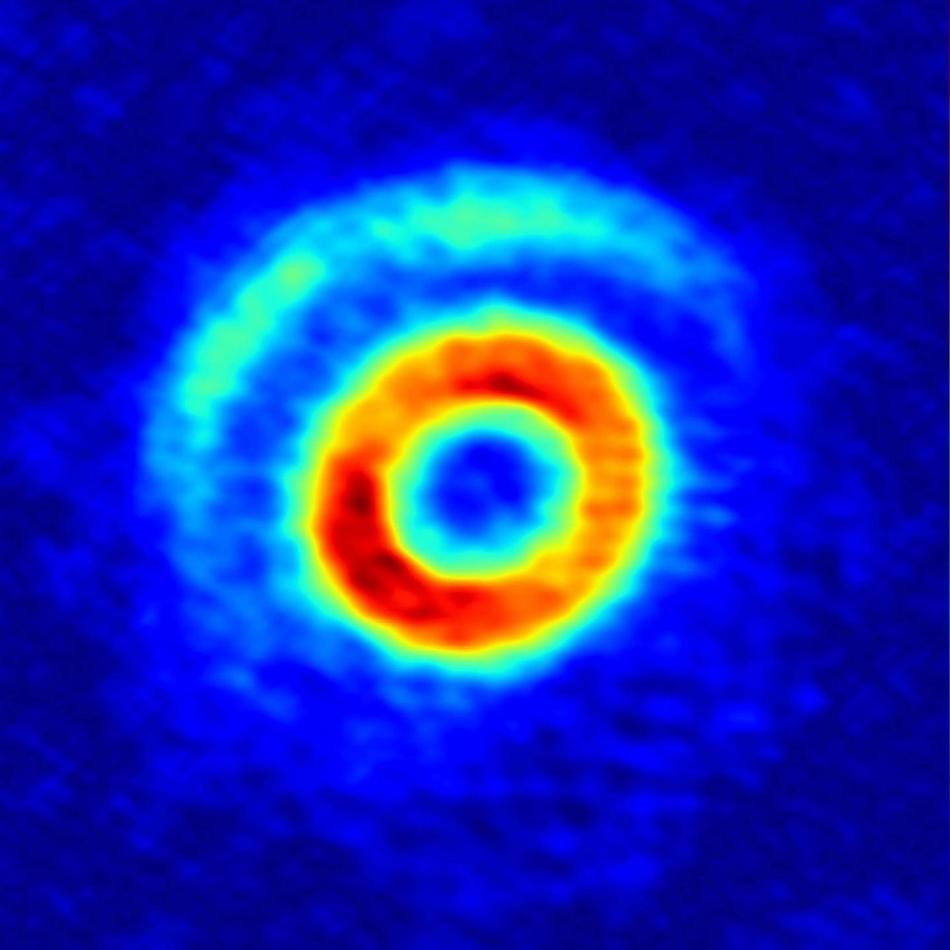Oct 16 2017
The quest to uncover the birth of planets found in the far reaches of the universe has taken a new, crucial twist.
 V1247 Orionis, a young, hot star surrounded by a dynamic ring of gas and dust, known as a circumstellar disc. Credit: University of Exeter
V1247 Orionis, a young, hot star surrounded by a dynamic ring of gas and dust, known as a circumstellar disc. Credit: University of Exeter
A new study carried out by an international group of Researchers, headed by Stefan Kraus from the University of Exeter, has provided a fascinating novel insight into one of the most esteemed theories of how planets are formed. Young stars begin with a massive disk of gas and dust that eventually, Astronomers believe, either diffuses away or coalesces into asteroids and planets.
However, Researchers are still looking for a comprehensive understanding of how these formations come together to develop asteroid-sized objects. One of the reasons has been that drag in the disk generated by surrounding gas makes the grains travel inward toward the star, which can in turn deplete the disk quickly in a process called “radial drift.”
In the new study, the group used high-powered telescopes in order to target the star V1247 Orionis, a young, hot star surrounded by an active ring of gas and dust.
The group generated a complete image of the star and its surrounding dust disc, revealed in two parts: a more delicate crescent structure positioned further out and a clearly defined central ring of matter.
The region between the crescent and the ring, seen as a dark strip, is believed to be caused by a young planet that carves its way through the disc. When the planet goes around in its orbit, its motion produces areas of high pressure on both sides of its path, like how a ship makes bow waves as it cuts through water.
These high-pressure areas could become protective barriers around the planet formation sites; dust particles are trapped inside them for millions of years, enabling them the time and space to gather together and grow.
The exquisite resolution of ALMA allowed us to study the intricate structure of such a dust-trapping vortex for the first time. The crescent in the image constitutes a dust trap that formed at the outer edge of the dark strip. It also reveals regions of excess dust within the ring, possibly indicating a second dust trap that formed inside of the putative planet’s orbit. This confirms earlier computer simulations that predicted that dust traps should form both at the outer edge and inner edge of disc gaps.
Professor Kraus, The University of Exeter
“Dust trapping is one potential solution to a major stumbling block in our theories of how planets form, which predicts that particles should drift into the central star and be destroyed before they have time to grow to planetesimal sizes.” Added Professor Kraus.